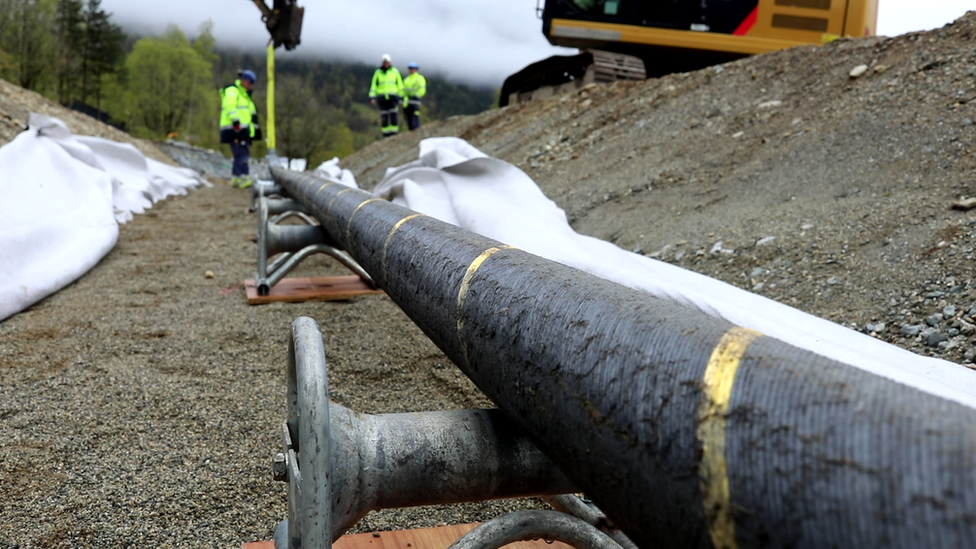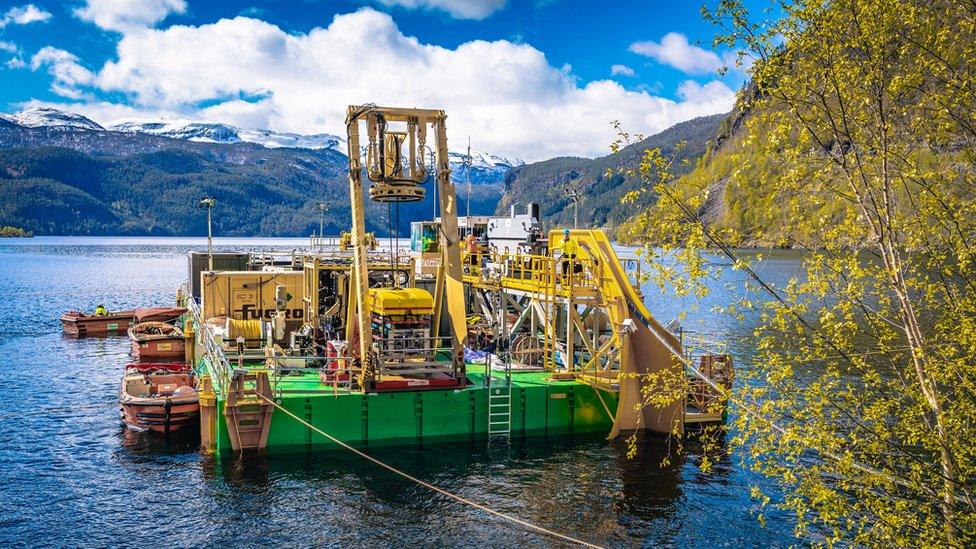Technology: How will the world’s longest power cables help reduce UK emissions?
- Published
- comments

The cable will run all the way from the UK to Norway and provide extra green electricity to the UK
The world's longest under-sea power cables, that stretch from the UK to Norway, have been switched on - but how will they help the UK lower carbon emissions?
The cables are called interconnectors, and they are parallel next to each other, measure 724km long and took six years to build.
The project is called the North Sea Link, and will connect to a power grid in Norway, which sources its power entirely from hydroelectricity - making it a green alternative to fossil fuels.
Using a green source of electricity could help the UK achieve their target of net zero by 2050.
Nicola Medalova, the director of interconnectors for the National Grid, said: "there is renewable energy that we can import to the UK to reduce our carbon footprint."

One of the specialist barges used to build the cable
What is an interconnector?
An Interconnector is a huge cable that connects power grids from countries that are close to each other - it's a way to share electricity.
The interconnector that connects the UK to Norway will provide 700 megawatts to the UK and will increase up to 1,400 megawatts over the next three months.
Watts are a measurement of electricity. In this case, a megawatt is equal to one million watts.
The schools fighting to save energy
How will the cables help the UK lower carbon emissions?
It's thought that the interconnector could lower carbon emissions in the UK by 23 million tonnes between now and 2030. This could help the UK hit its net-zero target by 2050.
The interconnector provides the UK with a new source that is hydroelectric, meaning they get their power from water and it is considered environmentally friendly.
This means that the UK doesn't have to rely on fossil fuel power stations when there isn't as much electricity coming from wind and solar farms.
Once the interconnector is as full as it can be with electricity, there will be enough to power 1.4 million households in the UK.
An easy way to picture it, think of a big battery in Norway that the UK can now use!
- Published15 April 2020

